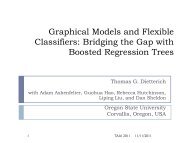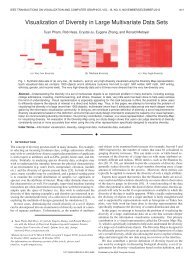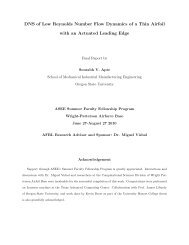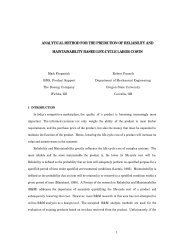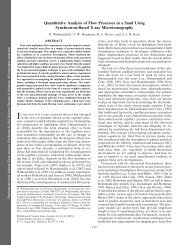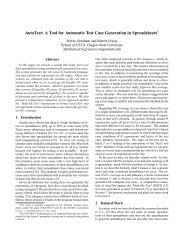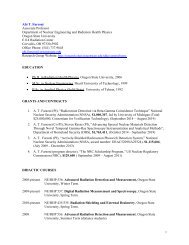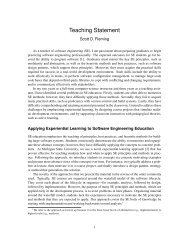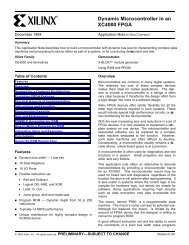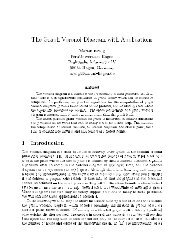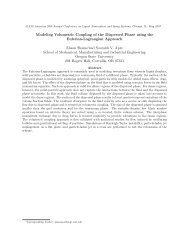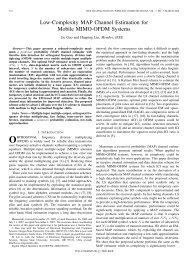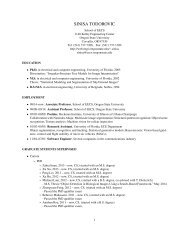Large-eddy Simulation of Realistic Gas Turbine Combustors
Large-eddy Simulation of Realistic Gas Turbine Combustors
Large-eddy Simulation of Realistic Gas Turbine Combustors
Create successful ePaper yourself
Turn your PDF publications into a flip-book with our unique Google optimized e-Paper software.
limitations <strong>of</strong> the turbulence model. Improved predictions using advanced RANS models can<br />
be obtained, however, the superiority <strong>of</strong> LES is clearly demonstrated. It should be noted that,<br />
any artificial dissipation or inaccurate numerics gives faster decay <strong>of</strong> the swirl velocities and<br />
incorrect size <strong>of</strong> the recirculation region, further emphasizing the importance <strong>of</strong> non-dissipative<br />
numerical schemes for LES.<br />
Figure (9) compares radial variation <strong>of</strong> liquid mass-flowrates using LES and the stochastic<br />
model to the experimental data. The flow rates are presented as the ratio <strong>of</strong> the effective to the<br />
integrated flow rate. The effective flow rate is defined as the flow rate the patternator would<br />
record if the fuel flux was uniform at the local value. This normalization inherently carries the<br />
ratio <strong>of</strong> the total cross-sectional area to the area <strong>of</strong> the local patternator holes. Also shown<br />
are the predictions made by the k − ɛ model together with the Taylor-Analogy Breakup (TAB)<br />
model [27] commonly used in industry. The LES results are generally in good agreement with<br />
the experiments. Average droplet sizes at two axial location from the injector wall (x = 1.1<br />
and x = 2.1) have been measured using the Malvern line <strong>of</strong> sight technique. The Sauter mean<br />
diameters averaged over the cross-section at these two axial locations are predicted within 5%<br />
<strong>of</strong> the experimental values. The present LES with stochastic breakup model predicts a broader<br />
distribution (not shown) as opposed to the one predicted by RANS with TAB model.<br />
The<br />
size distributions also indicate presence <strong>of</strong> large number <strong>of</strong> small size droplets compared to<br />
the experiments. This is attributed to the lack <strong>of</strong> collision/coalescence models in the present<br />
simulation. In addition, the initial droplet size at the injector nozzle is assumed to be a constant,<br />
whereas it may vary depending on the local conditions governing primary atomization. A further<br />
investigation with inclusion <strong>of</strong> collision models as well as using a size distribution at the inlet<br />
should be performed in order to investigate uncertainties in model predictions.<br />
20



